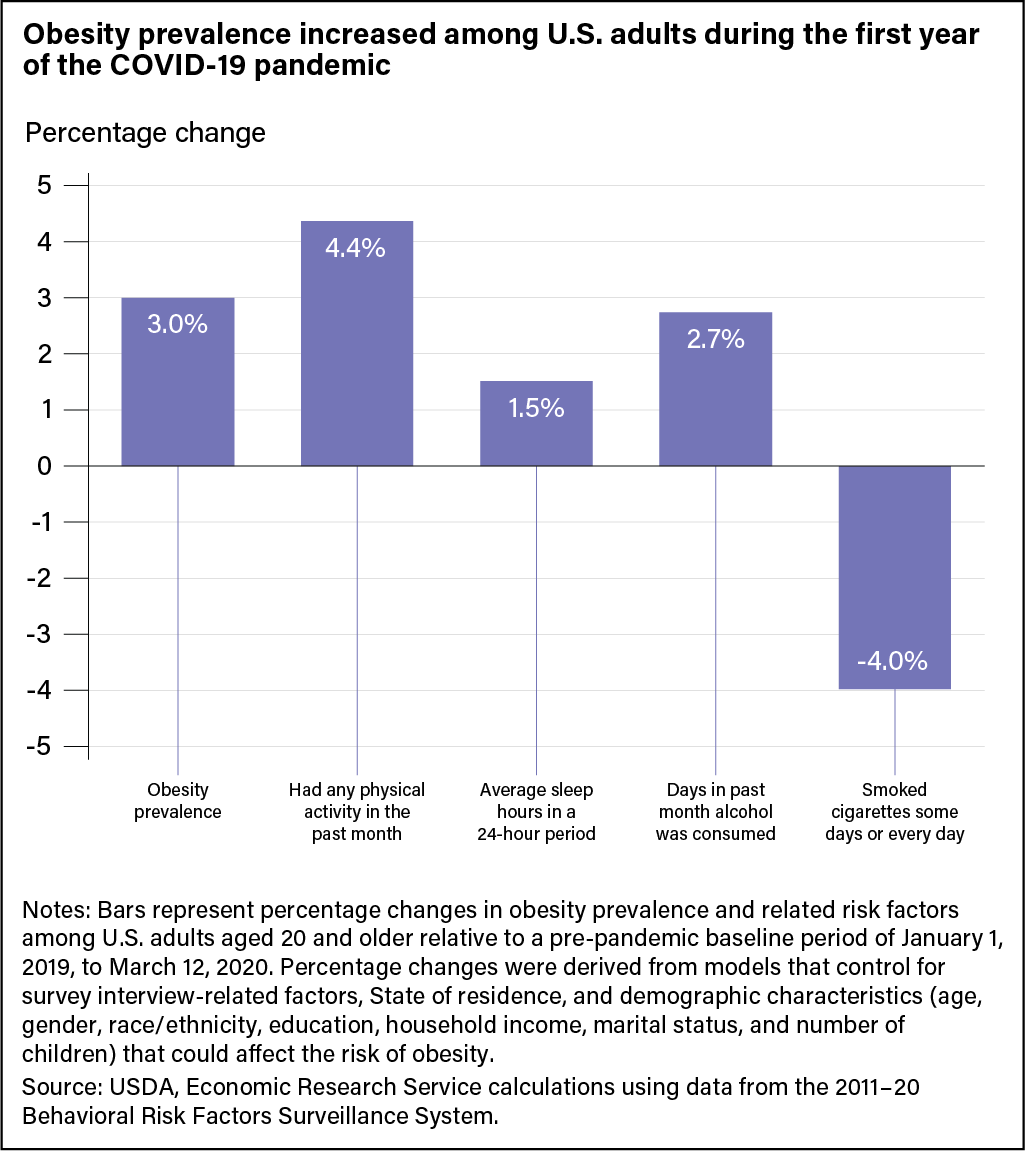
Adult Obesity Prevalence Increased During the First Year of the COVID-19 Pandemic
- by Brandon J. Restrepo
- 7/5/2022
In 2017–2018, 42.4 percent of U.S. adults experienced obesity, according to data from the National Health and Nutrition Examination Survey. As the Coronavirus (COVID-19) pandemic unfolded in 2020, studies using limited online surveys found evidence of weight gain among U.S. adults, suggesting that behavior changes during the pandemic exacerbated an already existing adult obesity epidemic. However, because the pandemic surveys did not represent the overall U.S. adult population, findings derived from them did not fully show how much obesity rates changed for adults during the pandemic.
To analyze the overall change in adult obesity prevalence during the COVID-19 pandemic, a researcher at the USDA, Economic Research Service (ERS) used data from the 2011 to 2020 Behavioral Risk Factor Surveillance System, a nationally representative survey that assesses chronic health conditions and health-related risk behaviors of the U.S. population aged 18 and older. The Centers for Disease Control and Prevention (CDC) uses the Adult Body Mass Index (BMI) to define weight categories and has determined that people aged 20 and older with a BMI of 30 or higher are categorized as obese. The ERS researcher also examined four behaviors that can influence the risk of obesity—exercise, hours of sleep, alcohol use, and cigarette smoking—to help explain changes in adult obesity prevalence rates.
The study found that, compared with a pre-pandemic baseline period (January 1, 2019, to March 12, 2020), adult obesity prevalence was 3 percent higher over the period from March 13, 2020, to March 18, 2021, the first year of the COVID-19 pandemic. March 18, 2021, was the date of the last interview in the analytical sample. Findings also showed statistically significant changes in each of the four obesity-related behaviors during the COVID-19 pandemic. Participation in exercise rose 4.4 percent, and people slept 1.5 percent longer. Meanwhile, the number of days in the period of a month in which alcohol was consumed was 2.7 percent higher, and cigarette smoking dropped by 4 percent. Research shows that increased use of alcohol and reduced cigarette smoking can lead to obesity and therefore may have contributed to the higher rates of obesity among U.S. adults during the pandemic.
CDC recognition of adult obesity as an epidemic dates to 1999. Adult obesity prevalence in the United States was trending upward in the years before the onset of the COVID-19 pandemic. As the pandemic conditions improve in the United States, this ERS study’s results can inform U.S. policymakers about the state of the obesity epidemic among U.S. adults as well as the contributing obesity-related behaviors.
This article is drawn from:
- Restrepo, B.J. (2022). “Obesity Prevalence Among U.S. Adults During the COVID-19 Pandemic”. American Journal of Preventive Medicine. doi.org/10.1016/j.amepre.2022.01.012.
You may also like:
- Food Consumption & Demand. (n.d.). U.S. Department of Agriculture, Economic Research Service.
- Diet Quality & Nutrition. (n.d.). U.S. Department of Agriculture, Economic Research Service.
- Obesity. (n.d.). U.S. Department of Agriculture, Economic Research Service.


